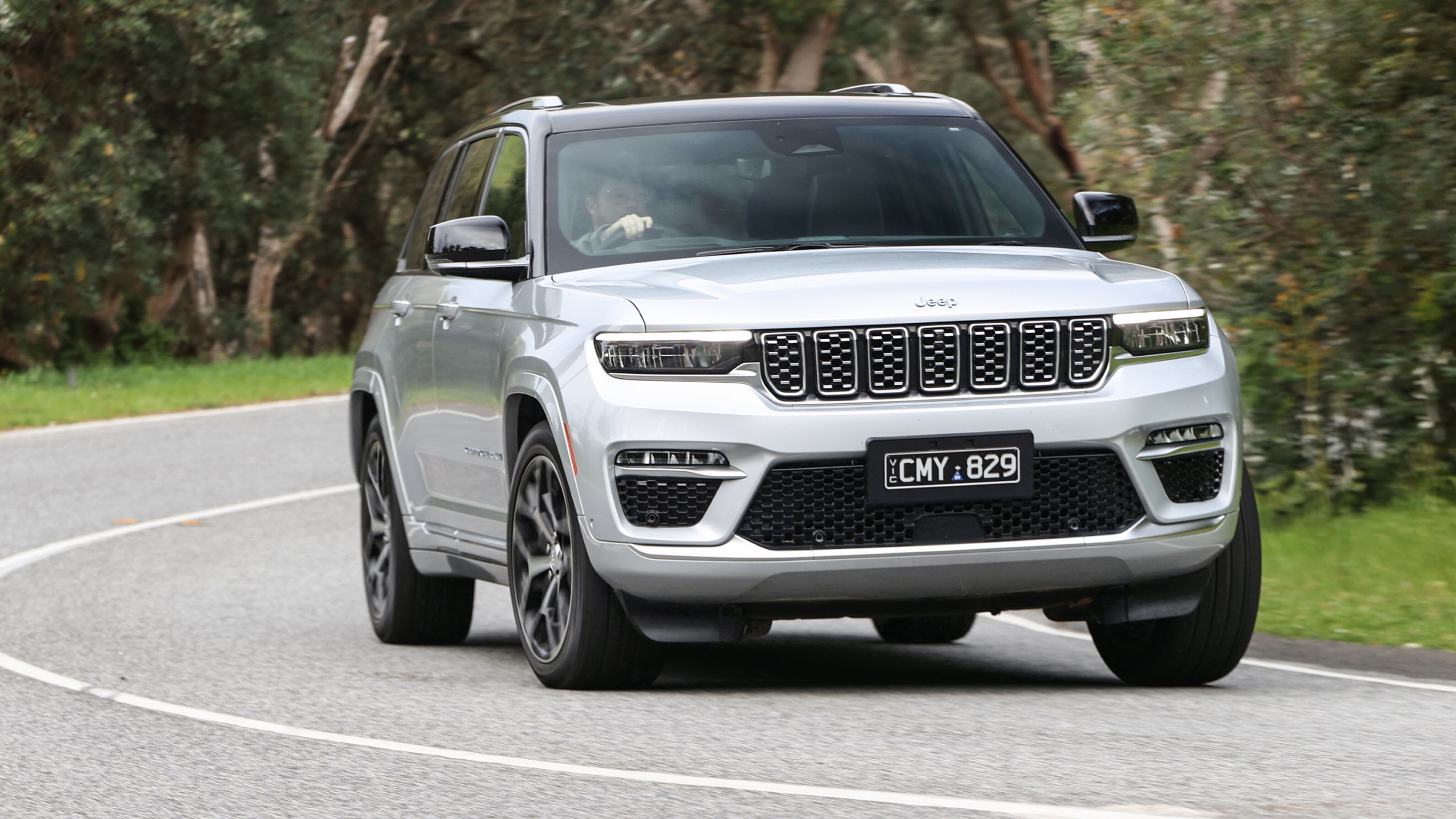
Score breakdown
Things we like
- Improved drivetrain over V6
- Uncompromised interior space
- Excellent comfort features
Not so much
- Top-shelf price
- Fuel consumption
- HUD optional
- Only one variant
Jeep, like a number of others, is making an effort to move in a more premium part of the new-car market, and part of its strategy includes a new Grand Cherokee that goes further upmarket than any before it.
Technology was given a lift, the styling is handsome, space is abundant and it’ll still hustle off-road like a Jeep should – but its ageing V6 engine was a fly in the ointment.
Now however, there’s a new variant which swaps out the Pentastar donk in favour of a far more contemporary drivetrain to take the seven-slot brand into new territory once again.
With its first plug-in hybrid to be offered in Australia, Jeep has never looked so fresh, but this skirmish into electrification comes at a cost.
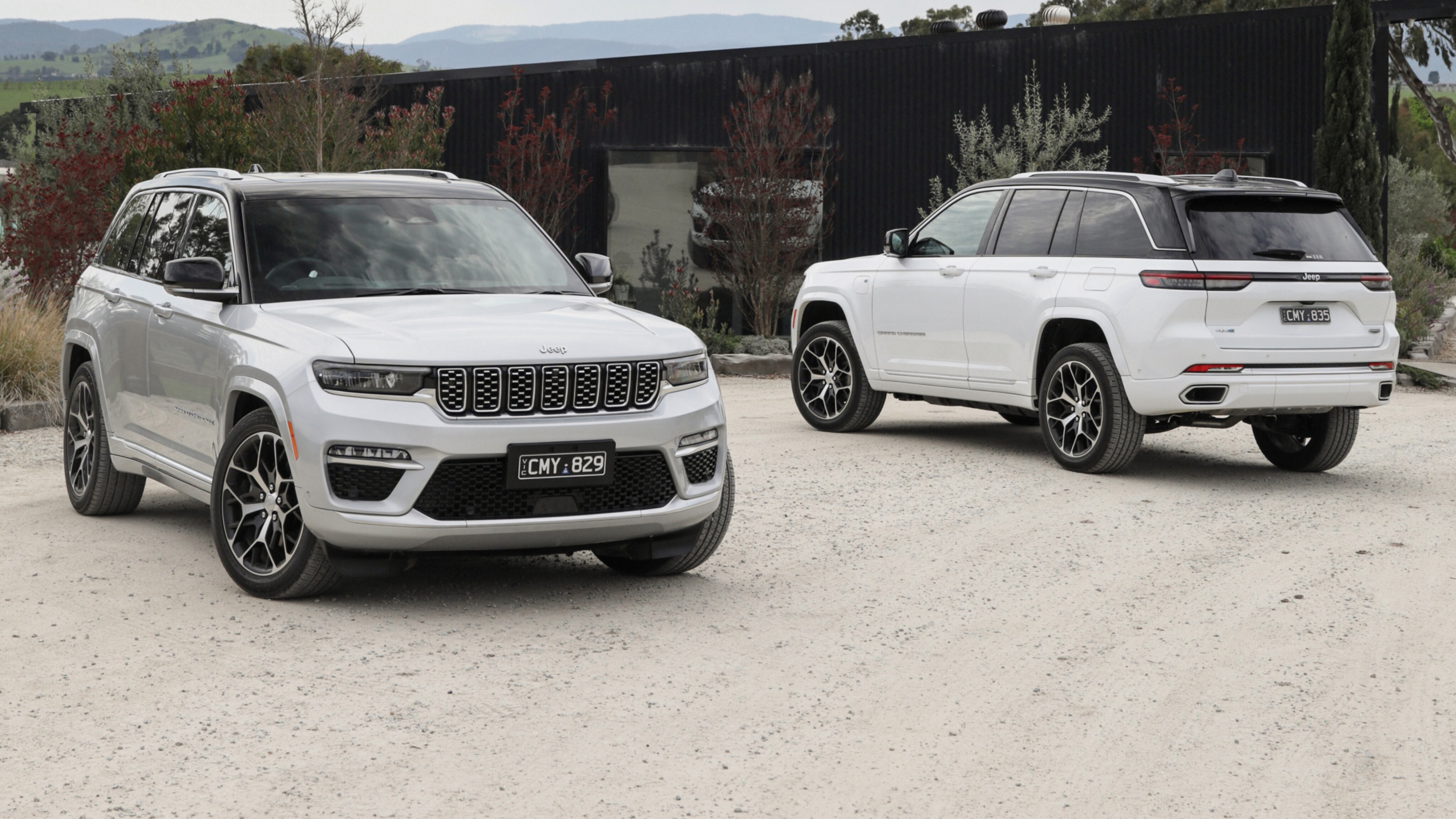
What’s changed?
While the versions that launched in 2022 and earlier this year continue with the 3.6-litre petrol V6, this new Grand Cherokee PHEV has a very different powertrain.
In place of the naturally aspirated V6 is a turbocharged 2.0-litre four-cylinder petrol, supplemented by an electric motor and 17.3kWh battery for 52km of electric-only driving.
Jeep estimates charging times of sub-10 hours on a Level 1 domestic plug trickle charger, or less than three hours on a Level 2 wall box at up to 7.4kW AC speeds.
Unlike the V6 versions available in up to four variants, the PHEV, for now, is only on offer as the highest-specification Summit Reserve and shares all the equipment of the seven-seat equivalent.

| Jeep Grand Cherokee 4xe key specs | |
|---|---|
| Powertrain | 2.0-litre turbo four-cylinder petrol engine + dual electric motors |
| Transmission | Eight-speed torque convertor automatic |
| Drive type | 4x4 on-demand |
| Battery size | 17.3kWh (gross) |
| Claimed fuel efficiency | 3.2L/100km |
| Claimed electric range (NEDC combined) | 52km |
| Max AC charging speed | 7.4kW |
| Max DC charging speed | N/A |
| Towing capability | Up to 2722kg |
Pricing
While Jeep has been making commendable progress in delivering vehicles that look and feel better built, and with some genuinely appealing tech and comfort features, the transformation is coming at a price.
Putting the Grand Cherokee 4xe on your driveway will come at $129,950 before on-road costs, which is a lot of cash – especially when you consider BMW will sell you an X5 xDrive 30d M Sport for about the same cash.
Also consider that Jep asks another $5500 for the Advanced Technology Group pack which adds things BMW already includes in the price, such as a head-up display and wireless device charging. It’ll then ask for another $1750 to add premium paint.
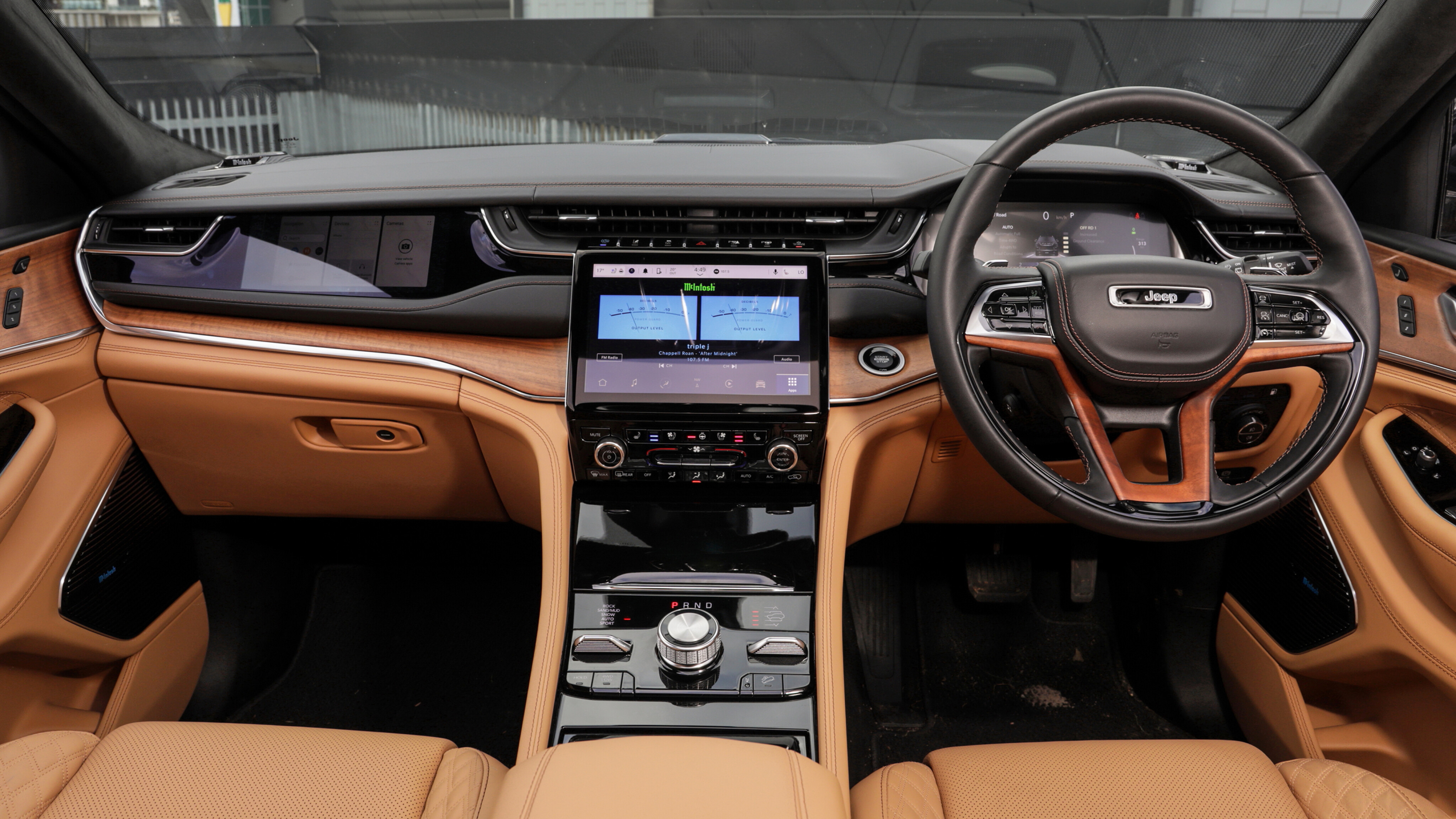
There are some genuinely likeable features included in the price, such as quilted leather seats with massage function, 10.1-inch central touchscreen with smartphone mirroring, fully digital 10.3-inch driver’s instrument cluster, panoramic glass roof, 21-inch wheels and LED headlights but it all adds up.
What would make more sense in our eyes than a kit-packed premium-priced 4xe, is a version that keeps the excellent plug-in powertrain, but rolls in with a more budget standard specification.
If Jeep could trim down a version to sail in under LCT, you could be looking at a very compelling plug-in hybrid large SUV with an attractive price to match.
Interior
The interior quality is generally good, and we certainly love the styling, but a few wobbly wood trims and scratchy plastics prevent Jeep’s flagship achieving quite the level of premium the company is aiming for.
Something all Grand Cherokees get in abundance, however, is space.
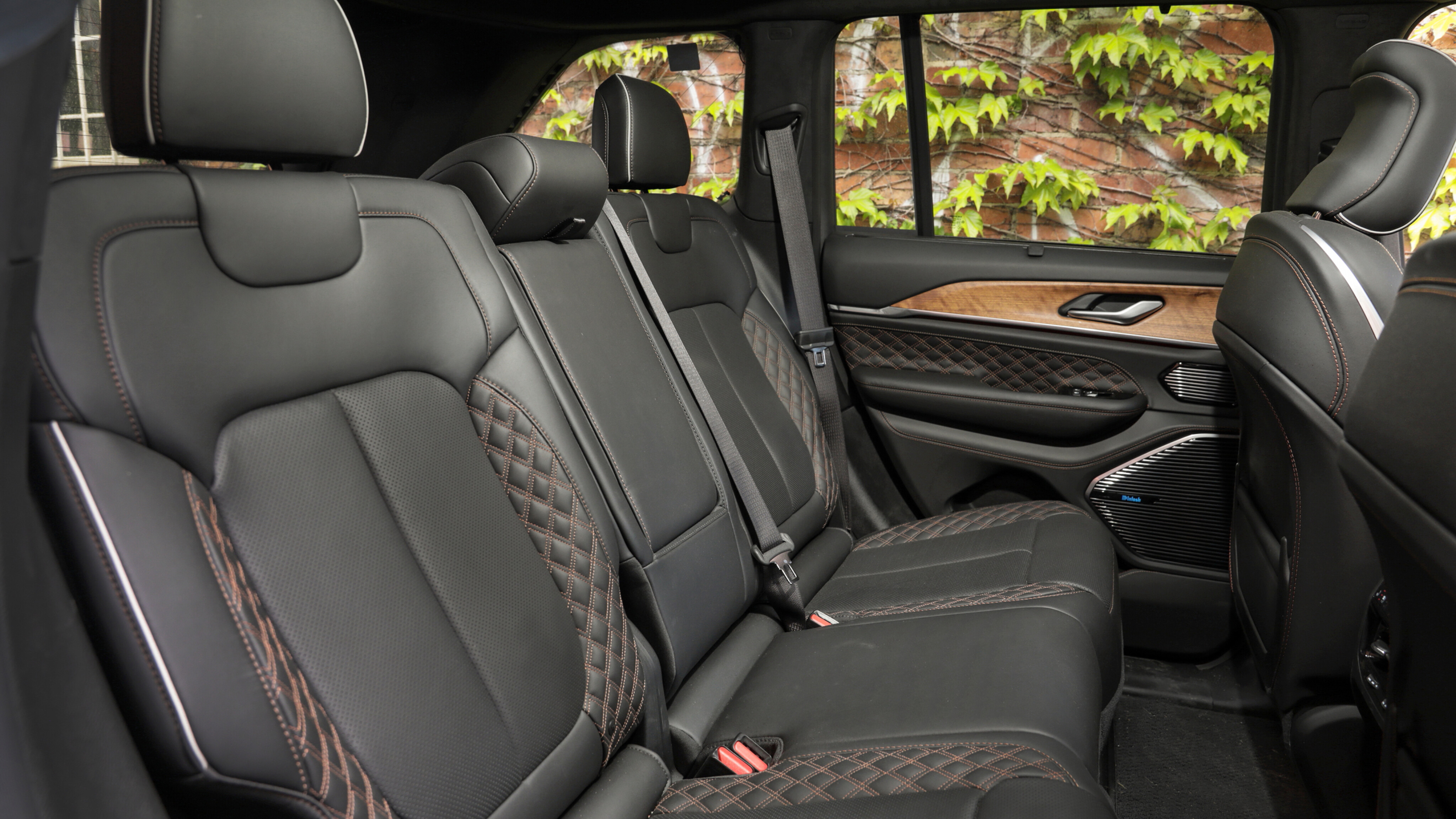
Although a seven-seat version is not available for the PHEV at this stage there’s still tons of room for people and things including a boot Jeep claims can swallow more than 1000 litres of stuff, although this is most likely measuring to the roof not window line.
Either way, it’s still huge and the same goes for the passenger spaces with lots of knee, leg, hip and head-room in both rows.
What makes the space even more impressive is that the inclusion of the battery has not impacted any luggage or occupant space.
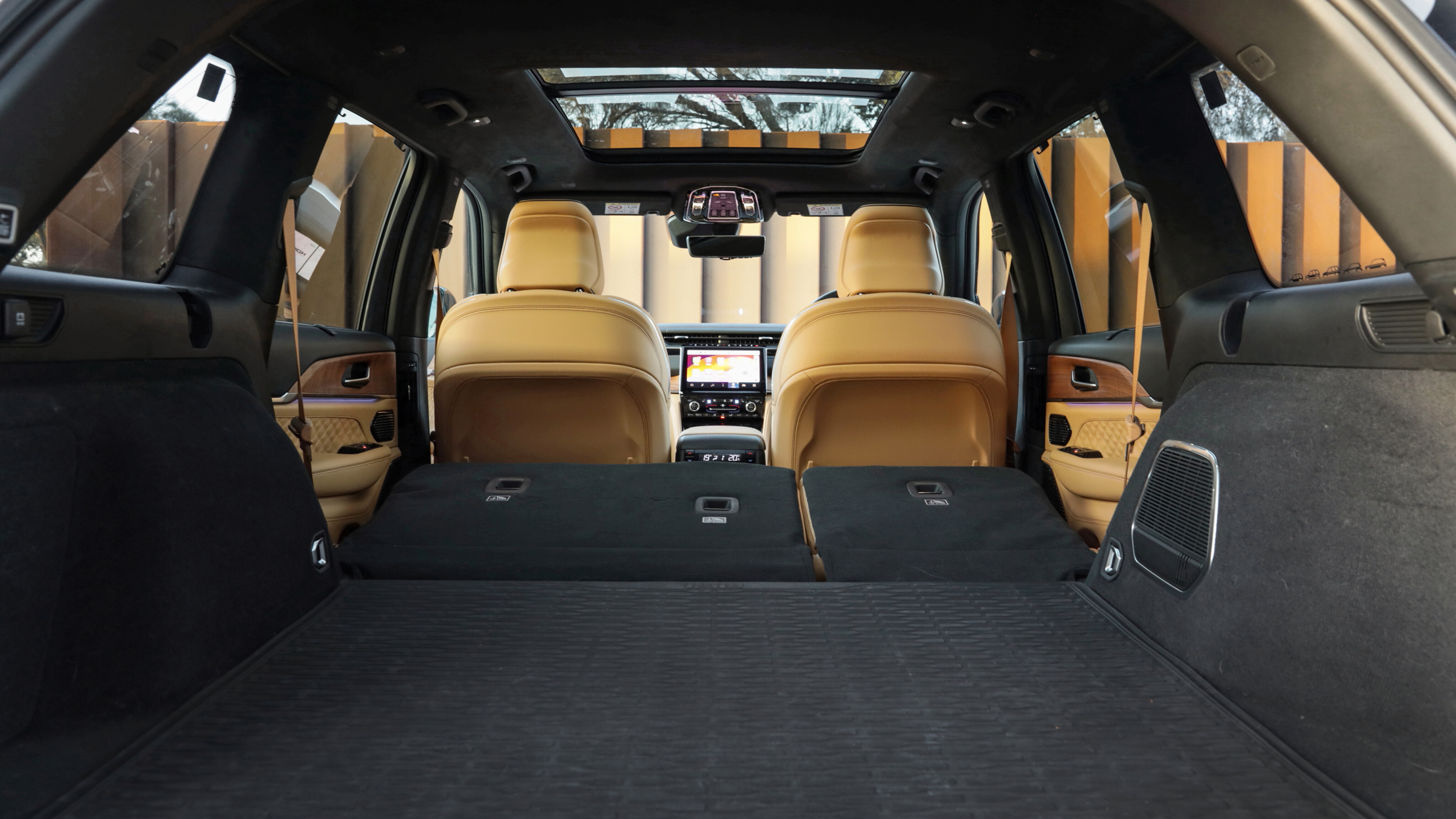
On and off the road
The Grand Cherokee 4xe’s hybrid powertrain isn't one of those afterthought types. It's clear this one has been engineered to preserve, if not enhance Jeep’s all-terrain reputation.
It’s achieved this by integrating the electric motor into the eight-speed automatic transmission rather than the front or rear axle.
This means all of the Grand Cherokee’s driving, off-road and transmission settings are available when driving in pure electric mode.

We’ve driven the Grand Cherokee L in some pretty gnarly conditions and it was very impressive. Our first test of the PHEV didn’t involve anything near as tough, but it certainly seems to have the full potential.
Like other electrified off-road vehicles, the 4xe’s instant torque is applied well in an off-road environment when power needs to be carefully controlled. Rather than revving a petrol or diesel hard, the electric motor delivers exactly what’s required with an eerie stoicism.
Jeep also highlights that cruising in an almost silent off-roader allows a better connection to nature, but our cabin was too full of laughs and conversation to fully appreciate that, which we’re chalking up as just as much of a success.

On the road is where the new powertrain really shines. The petrol element is refined and powerful, while the torque-fill of the electric component has resulted in excellent linear and strong performance.
In the previous model, you’d have to browse the V8 versions to compare but, as a fifth-gen eight-cylinder variant is not on the cards for Australia – yet – the 4xe is the performance hero for now.
The ride continues to be relatively comfortable, although there’s a fussy edge when negotiating some of Victoria’s less well maintained roads and, like all high-spec Grand Cherokee variants, there’s plenty of equipment and features to keep all occupants happy.
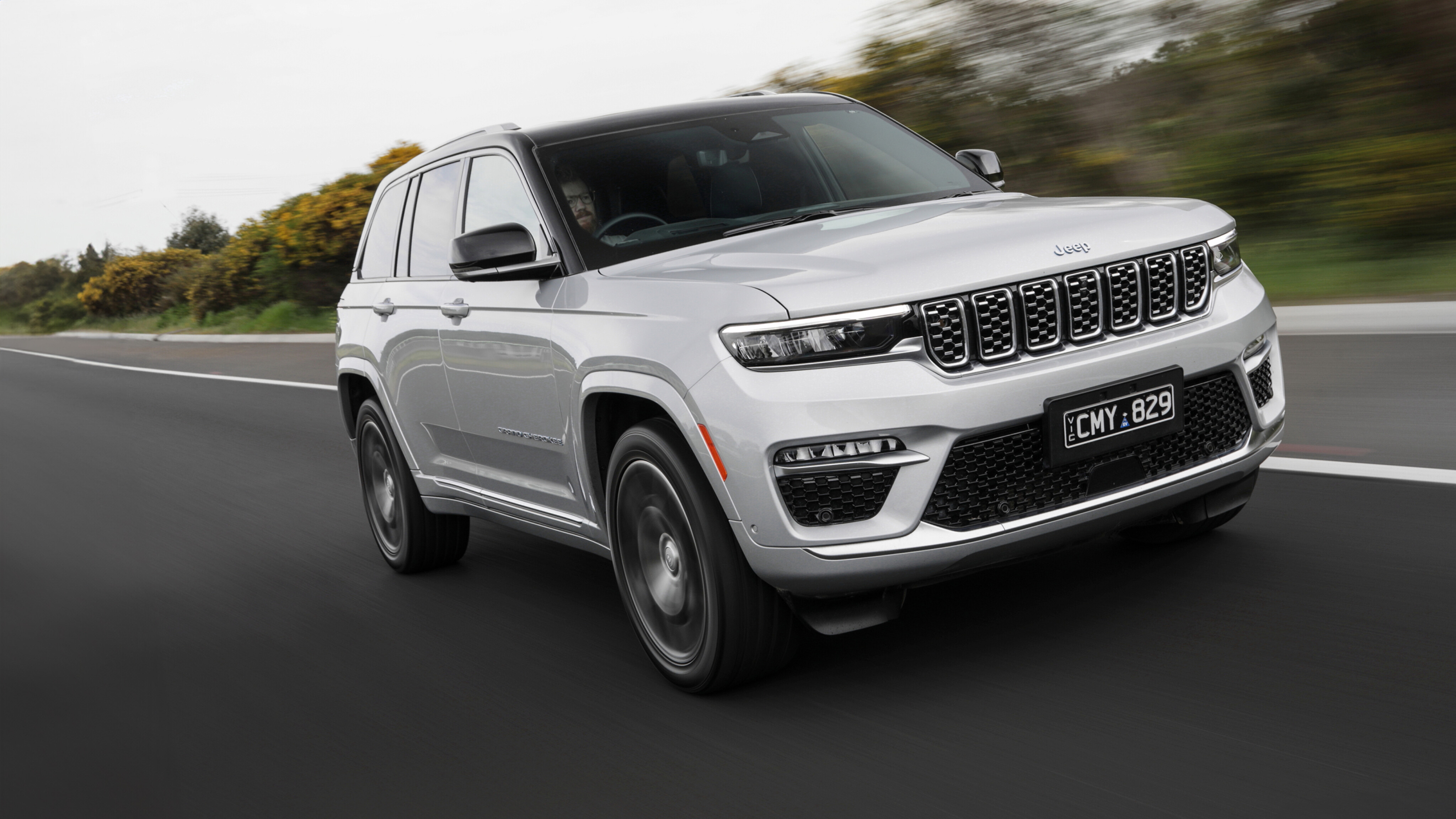
Fuel consumption
Jeep claims an NEDC average fuel economy figure of 3.2 litres per 100km which includes the use of the hybrid system and a fully charged battery. Once that’s gone however, the 4xe does little better than the V6.
During our time with the new variant, it reported a figure of 11.6L/100km which, if you apply the usual being-driven-by-journalists-on-a-launch-event caveat, would improve somewhat. However, as to how much better a real-world figure could be achieved in out-of-town duties compared with the standard V6’s 9.9L/100km … it’s probably not a massive improvement, if at all.

Further impacting the value equation is the 4xe's smaller fuel tank – 72 litres vs the 87-litre tank in the V6 versions. Jeep doesn’t quote outright ranges due the huge variation depending on the type of driving and loading etcetera, but it’s clear from the similar fuel consumption figures that the hybrid isn’t going to go as far.
If you are into outback adventures, the 4xe does have excellent torque characteristics that would make long drives and towing a breeze, and there’s up to 2722kg of braked trailer capacity to play with.
We sense that, although Jeep is being vocal about the plug-in hybrid’s off-road ability and adventurous spirit, this particular Grand Cherokee is on a bearing into town rather than outwards toward the hills.
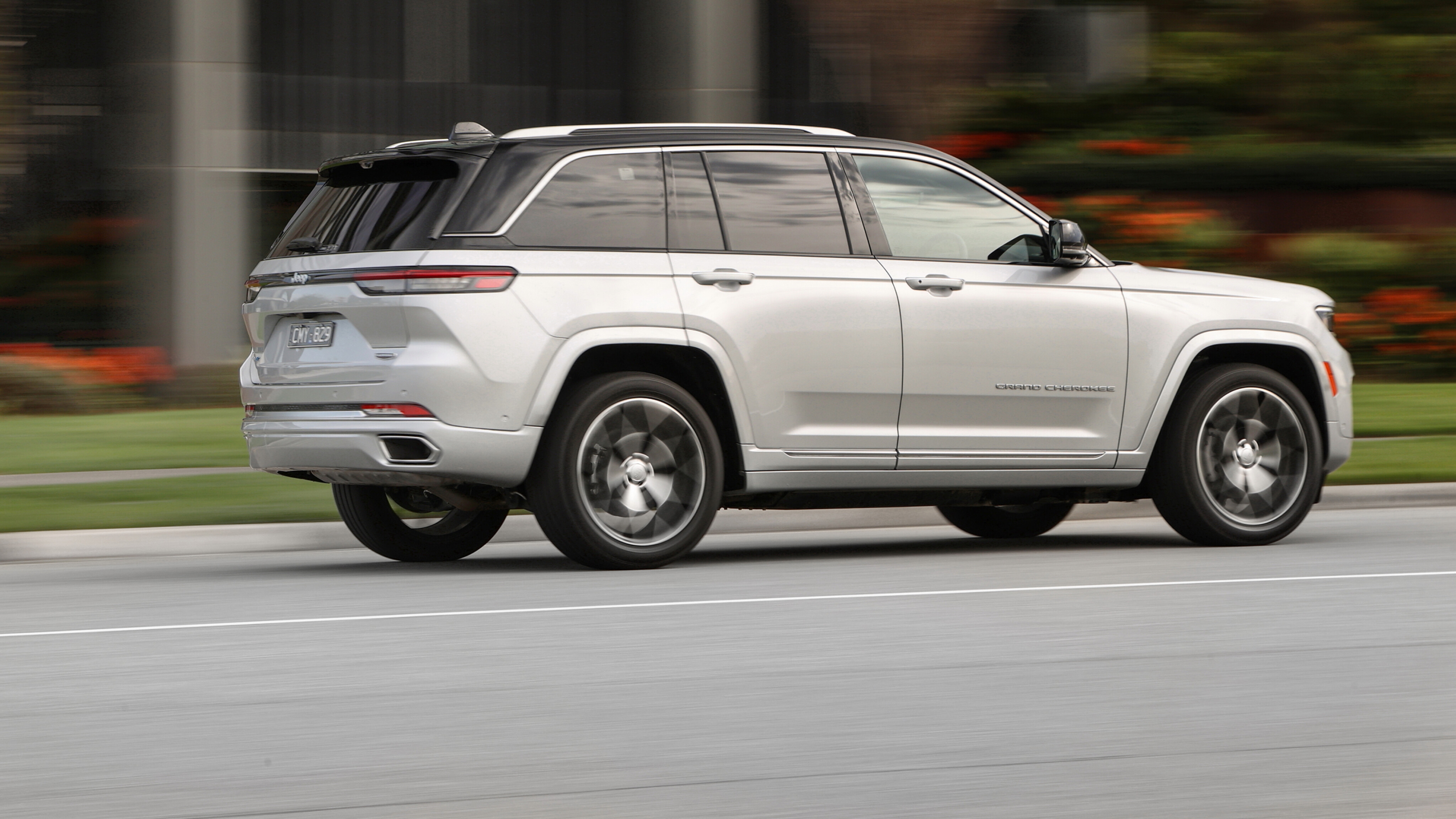
Safety
ANCAP tested the long- (seven seat) L and short-wheelbase (five seat) PHEV in one go in September 2022, and awarded it the maximum five-star rating.
It earned a very high score for child occupant protection and good ratings in all other assessment of adult occupant protection, vulnerable road user protection and driver assistance systems.
Standard safety inclusions include adaptive cruise control, AEB with pedestrian and cyclist detection, 360-degree camera, traffic sign recognition, self-parking, lane-keep assistant and blind-spot monitoring (with rear cross-traffic alert) included in the price. Only the digital rear-view mirror is optional.
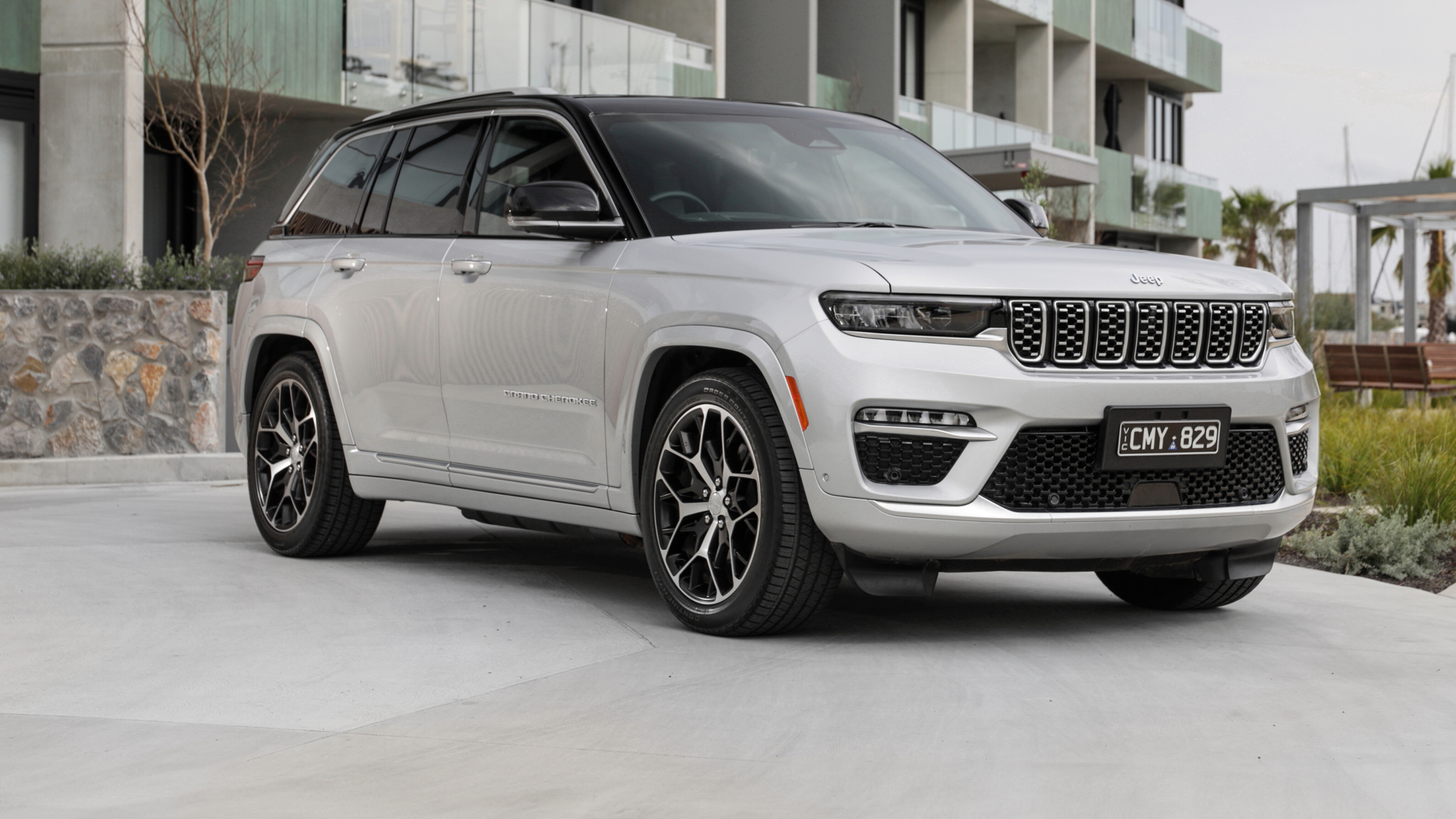
VERDICT
With a commute of about 52km or less, and somewhere to charge it, the first PHEV with a seven-slot grille makes sense
For now, the Grand Cherokee’s 4xe plug-in hybrid powertrain strengthens the weakest link in the fifth-generation model’s armour. It’s smooth, powerful, responsive and potentially more efficient, and compromises apparently nothing of the brand’s all-terrain promise.
To see the variant’s true value equation however, it’s necessary to look through Jeep’s marketing filter and imagine the plug-in’s true natural habitat - the urban jungle.
With a commute of about 52km and somewhere to charge it, the first PHEV with a seven-slot grille makes more sense than a machine that’ll spend its life cruising freeways and back roads. That said, if the latter is occasional, it’ll double quite nicely.
But with little improvement over the V6 Grand Cherokee’s fuel consumption and shortened range, the more conventional versions are better applied away from the beaten trail. Either way, it’s still expensive.
Jeep will no doubt continue its push into ever more premium territory, but in this case, a more affordable sub-LCT 4xe with a more basic kit list might pair better with the very likeable and powerful plug-in hybrid powertrain – with a price to match.
Score breakdown
Things we like
- Improved drivetrain over V6
- Uncompromised interior space
- Excellent comfort features
Not so much
- Top-shelf price
- Fuel consumption
- HUD optional
- Only one variant



COMMENTS